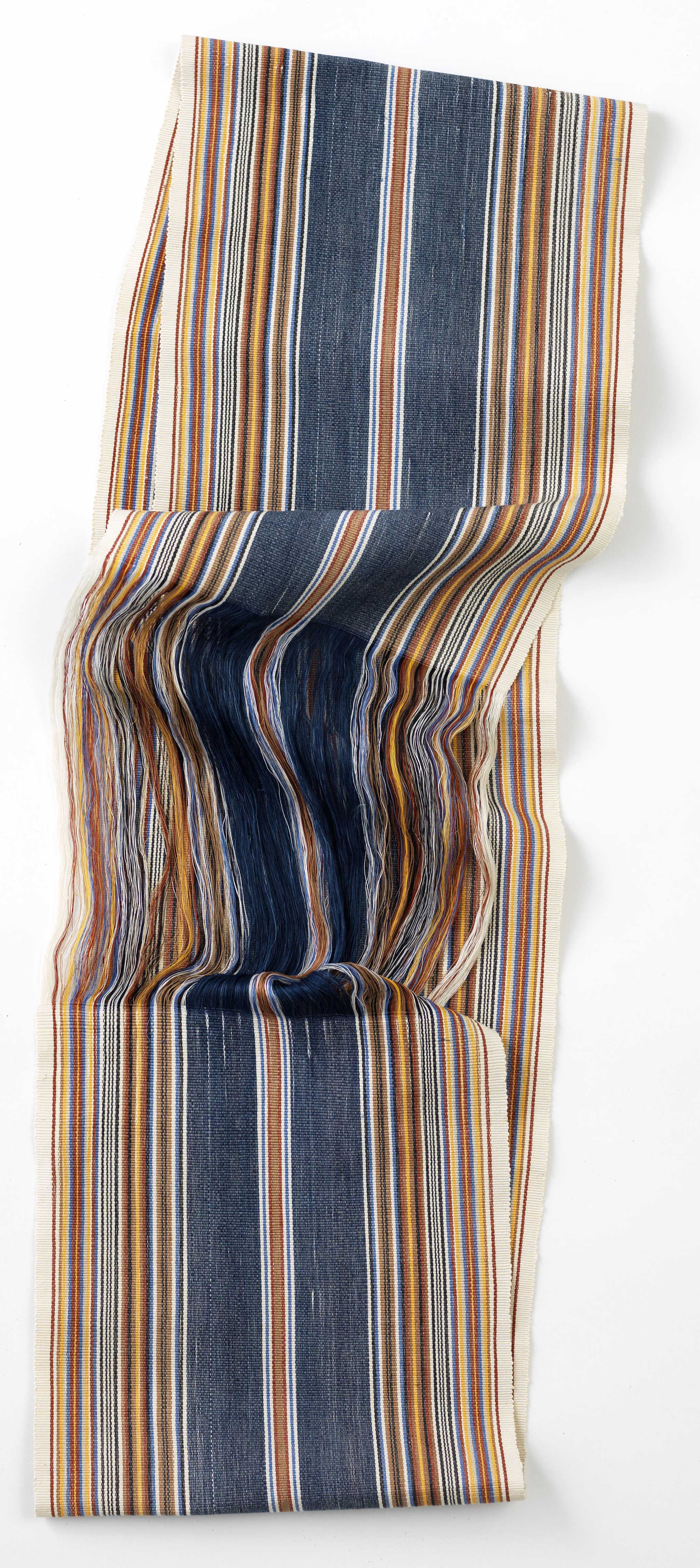Textile

Gedogan or wangsul (tubular continuous warp cloth). Ida Ayu Ngurah Puniari, weaver; Ida Ayu Pidada, dyer. Batuan, Bali, Indonesia. 2017. Cotton, natural dyes; handwoven plain weave, continuous warp, warp uncut. Private collection. Photo credit: Bruce White.
A tubular continuous warp textile in a pattern called sugih rendah (humble-rich) intended as a deity offering during a youth ceremony. This textile is named “humble-rich” as it is believed to embody the idea of balance through its equivalence between allure and modesty.
In youth ceremonies, the initiate’s body is enhanced by textiles. Since the filing of the teeth is a modification of the body as the spirit’s temporary shell, the individual is vulnerable and needs the protection of textiles as well as family members. Some of this protection is invoked through deity offerings of uncut continuous warp textiles generally called gedogan or wangsul. Such fabrics also embody the values of purity, cyclicality and cosmological dualism and balance. Like the textile named sugih rendah, these cloths may also have evocative titles indicating their aesthetic, cultural and philosophical value. Magical continuous warp textiles with double ikat weaves, known as geringsing, may be incorporated as protective coverings for the pillows used in toothfilings as well as covers for the initiate’s chest.